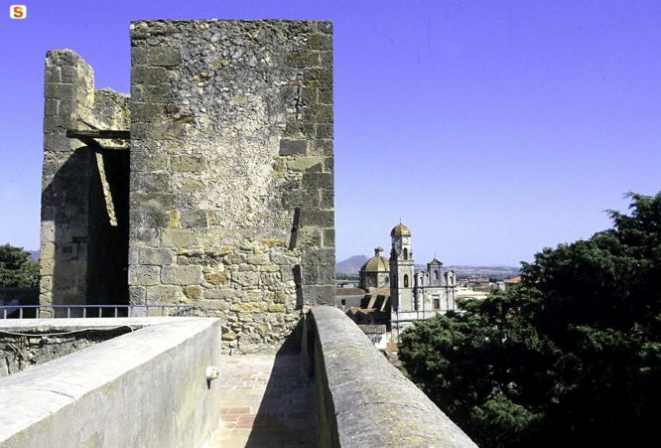"Sa Battalla" and the legend of the Beauty of Sanluri
The slaughter of a population revenged by the courage of a beautiful girl.
History and legend face each other in the proverbial contrast that wants to prevail one over the other and more often if this does not happen or if you do not want to limit the facts to a one way reading, the combination of both is the best operation you can make. This story, in fact, intersects history and legend, blended together to create a unique event.
In 1409 near Sanluri it was fought the famous battle between the Catalan-Aragonese forces, led by Martin the Younger and the Sardinian army of the last Giudicato (state entities of Sardinia that took power between the IX and XV Century, ruled by a king called judge) the last still living in Sardinia, the one of Arborea, led by Guglielmo III. The Giudicato army was made up of over fifteen thousand soldiers, ill-equipped, also supported by troops from Pisa, Genoa and France, by higher number than their rivals, but less trained, adapted and equipped.

The clash took place on June 30 and the impact for the Sardinians was tremendous. Suddenly divided into three parts, the army of Guglielmo III failed to limit very big losses. Of the first two sections only one that took refuge in the castle of Monreale resisted and was saved.
The other capitulated in the castle of Eleonora in Sanluri, failing to oppose the troops impact of Martin the Younger. The third part of the army was forced to retreat to the valley of the River Mannu. The river proved an insurmountable obstacle for the Sardinian troops that found themselves trapped and unable to cross the river, (exceptionally flooding), were forced to climb the hill, manned entirely by the Aragoneses that then murdered them mercilessly, the site became the symbol of this battle, called "S'Occidroxiu" (the slaughter).
Trounced two-thirds of the Sardinian army and forced the remaining soldiers to flee, Martino invaded the fortified village and, after several brutal killings, enslaved many women, elderly and children.
Among the captured slaves, stood out a beautiful young woman who did not pass unnoticed to the eyes of the heir to the throne of the Crown of Aragon. A young girl by the magnificent forms of which the king madly fell in love, so much that he wanted her to be brought to his presence.
But Martino, the days after the great victory was seized by sudden fevers due to malaria which raged near the river where he had accomplished the extermination of the Sardinians.
As soon as he regained a minimum of forces, albeit still terribly tried by the illness that struck him, he turned his thoughts to the beautiful girl who had been kidnapped and if he brought her to his court.
It was then that "the Beauty of Sanluri", met with bravery the sovereign and, apparently returning his feelings, repeatedly slept with him, sapping him with a long series of embraces that they took in a few days, leading him irremediably to death.

About the legend of the " the Beauty of Sanluri", by the beautiful shapes and beautiful eyes, talked about both Giuseppe Manno and Francesco Casula, major Sardinian historians, that fueled the myth that wanted the death of Martino the Younger, was not only due to malaria.
In many, at the time, were convinced that the main cause of that death was to be found in the intense, tormenting and fleeting romance between the king and the girl, and if she, in addition to her charmer skills, had also resorted to poison to kill Martin, was a matter of little consequence.
The " the Beauty of Sanluri", somehow ended what the malaria had begun and thanks to her charme, cunning and her great beauty, took the biggest revenge in the name of his martyred people who had paid all that blood, inside and outside the walls of the castle and over the hill of S'Occidroxiu, and who loudly claimed revenge.